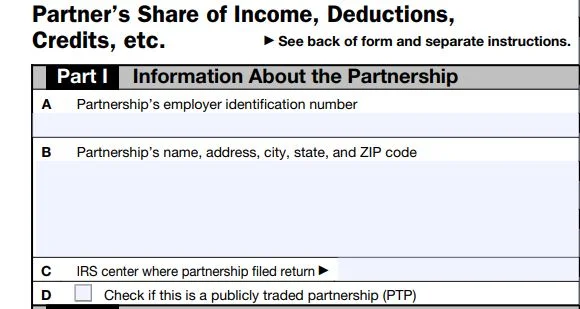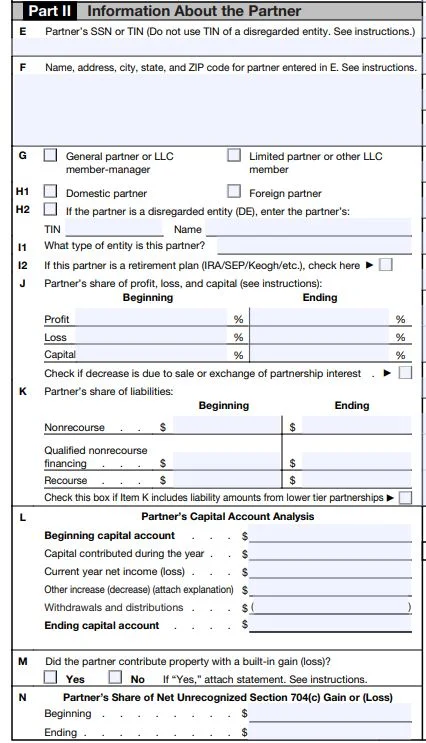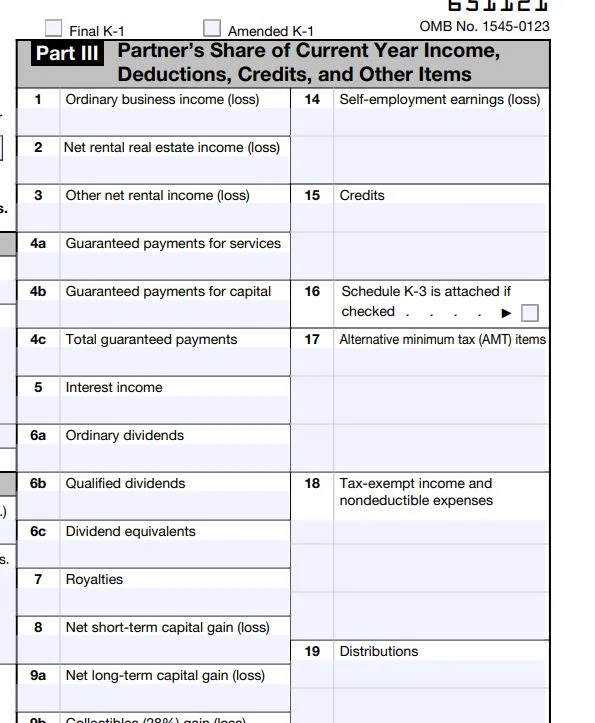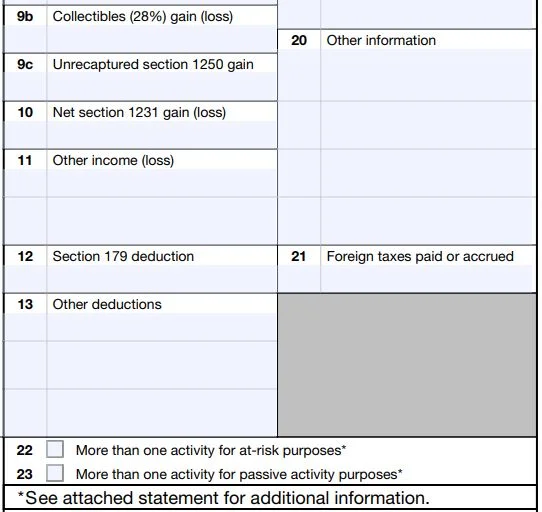K-1 Tax Form for dummies: clear, easy guide (with screenshots!)

Whenever we hear the topic of form K-1 discussed, it’s always explained using highly technical language that is almost impossible for the average investor to decipher. We’re taking a much better approach. Here’s our clearly explained guide to the K-1 tax form, including an explanation of what the different parts of the K-1 mean, as well as the common questions we get about it. We’re making it super clear and easy (finally!)
The K-1 tax form: a clear explanation
What is the K-1 tax form?
A K-1 tax form is used to report the earnings, losses, and dividends you make by participating in some type of private investment, usually a Limited Partnership (LLP), Limited Liability Corporation (LLC) or a small percentage of ETFs. Any time you are invested in a “pass through entity”, you haven’t paid tax at the partnership level, so you have to pay it to the IRS individually.
K-1s are very important. Many people receive them in the mail and toss them aside – not so fast! Here are some quick facts about what the K-1 is:
- It is a Federal form. The information on the form must be sent to the IRS as it pertains to your Federal tax filing.
- The pass-through entity tracks your stake in the earnings, and send you the form by March 15th.
- Schedule K-1 is found on the IRS website.
Here’s what the K-1 is not:
- An explicit bill (not yet; it’s just to compute your Federal income tax, which is why you have to file it with your Federal tax filing)
- A voucher
- A form of income (This is a tax document that reports the income you earned, it’s not the income itself)
- A 1099. Form 1099 is an IRS form used to track dividends, interest, capital gains and losses, and other forms of miscellaneous income.
What are the parts of the K-1 form?
As financial advisors helping high net worth individuals with their wealth, we see that it is usually a point of confusion and anxiety when investors receive their K-1 forms in the mail. Let’s take it part by part, shall we?
There are three parts to a K-1 form.
- Part I: Information about the Partnership
- Part II: Information about the Partner
- Part III: Partner’s Share of Current Year Income, Deductions, Credits, and Other Items
Having said that, now we will go over each, one by one.
A guide to the K-1 Form Part I
Here’s a screenshot showing Part I of a blank K-1 form.

Remember, it is the owner of the partnership that fills out the K-1 and sends it to the limited partner. So if you’re the investor (limited partner), you don’t need to worry about filling out anything on this form.
We repeat: The issuing entity is the one who fills this out and send it to you. You are not responsible for filling out your own K-1 unless you are the general partner.
In Part I, the partnership must provide its identifying information such as name and address, as well as where they file their tax return as an organization.
What you need to do:
Just check this over and make sure you recognize the partnership’s name and identifying information. In other words, make sure that they sent you the K-1 for the right investment vehicle. If there are mistakes, notify the issuer and they will have to issue an amended K-1 to you.
Guide to Tax Form K-1 Part Two
In part two of the K-1 form, the entity has to fill out your information, as the investor. You should check all of this information and make sure it is 100% correct. You may have moved, changed addresses, etc., and it is imperative that this information is accurate.
Part II of the K-1 form describes your involvement in the partnership, basically. It states what kind of partnership stake you have (general partner, limited partner, etc.) as well as what the profit and loss were for the year. In Part II, you will also see your beginning balance, any capital you put in, and the increases that led to your ending balance. Again, check this versus your statements to make sure it lines up. You don’t want to get taxed on a gain that you didn’t receive.

A Guide to Part III of the K-1 Form
Part three of the K-1 form is where the income you received is documented.


This is the information you’ll need to plug in to your Form 1040 when you file it. Your tax preparer can help you with this, and if there are any questions you should definitely consult with a tax advisor. Our writings on this subject are not advice specific to any one person’s situation.
Usually to fill out your 1040, you’ll need to pull the data from Rows 5 (interest income), 6a (ordinary dividends), 6b (qualified dividends), 6c (dividend equivalents), 8 (net short-term gain or loss),and 9c (net long-term gain or loss).
Why is the K-1 form so complicated?
It doesn’t have to be. As financial advisors in Philadelphia serving clients across the country, here are what we see as the things people find most confusing about the IRS Schedule K-1 form.
What do I do with my K-1 form?
Enter the information provided on your K-1 onto your IRS Form 1040, and file the form with your taxes.
If any questions, best to reference the 2021 Schedule K-1 instructions which you can download online. Or, ask mentioned before, consult with your CPA or tax advisor if any questions.
Does a K-1 count as income?
No, it is a tax form that expresses the amount of income you earned. It is merely a statement of income, not a bill, a check, or any other value-bearing note.
How do I know if I am supposed to get a Form K-1?
Sometimes investors who invest in closed end mutual funds, LLPs, LLCs, MLPs, and certain types of ETFs receive a K-1 in the mail.
Here is a comprehensive list of who typically has to file a K-1:
- Owners and investors in pass-through entities (S-corporations, partnerships, LLCs)
- Anyone who gets benefits from a trust or estate
- General partners
- Limited partners
- Holders of certain types of ETFs (usually commodity ETFs)
Does tax form K-1 vary by state?
It is a Federal form but may vary based upon where investor is. This is not for the investor to worry about; the issuing corporation must elect to send you the correct version of the K-1 depending upon in which state you reside.
Where do I get the Form K-1 from?
The company or pass-through entity that you are involved with must, by law, send you the K-1 either through the mail or electronically. You do not have to go get it from them – they are required to send it to you.
However, to facilitate your receipt of this form (as they tend to arrive late), we recommend that you opt for both electronic and hard copy transmission.
What if I don’t get my K-1 by March 15th?
They are usually late to arrive so opt for electronic notification if possible. If you do not receive it by March 15th, you’ve got to start bugging the company to send it to you.
Did our blog on Tax Form K-1 help at all?
We hope our explanation on the tax form K-1 was easy to understand.
We are a fiduciary financial advisor in the Philadelphia area, but we work with clients across the country. We provide fee-only, objective advice to our clients. If you would like to discuss a possible relationship, contact us.
Sources
2021 Schedule K-1 (Form 1065). IRS.gov. Retrieved from here.
